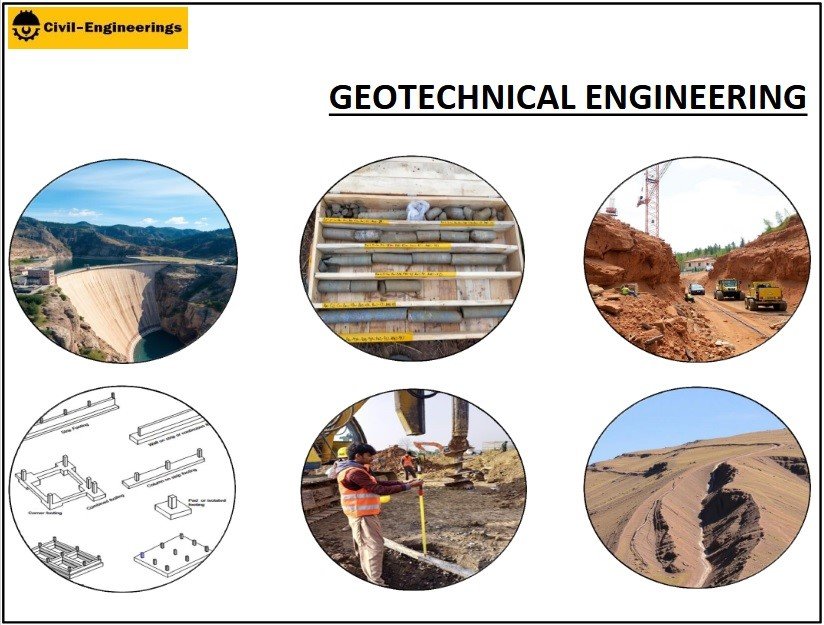5 Simple Techniques For Specialized Geotechnical Engineering Solutions
Table of ContentsThe 4-Minute Rule for Specialized Geotechnical Engineering SolutionsThe 25-Second Trick For Specialized Geotechnical Engineering SolutionsGetting My Specialized Geotechnical Engineering Solutions To WorkThe Greatest Guide To Specialized Geotechnical Engineering Solutions
They perform site examinations, accumulate examples, do laboratory examinations, and evaluate data to assess the suitability of the ground for construction projects. Based upon their findings, geotechnical engineers provide suggestions for foundation design, incline stability, preserving structures, and mitigation of geotechnical hazards. They collaborate with other experts, such as engineers, structural designers, and building groups, to guarantee that geotechnical factors to consider are incorporated into the total project design and execution.
Structure Design: Geotechnical designers play an important role in creating structures that can safely support the intended structure. They examine the soil problems and tons needs to identify the appropriate foundation kind, such as shallow foundations (e.g., footings), deep structures (e.g., piles), or specialized strategies like dirt improvement. They consider aspects such as settlement restrictions, bearing ability, and soil-structure interaction to establish optimum foundation designs.
The Only Guide for Specialized Geotechnical Engineering Solutions
Below are some kinds of geotechnical designers: Foundation Engineer: Foundation engineers concentrate on designing and examining foundations for structures - Specialized Geotechnical Engineering Solutions. They analyze the soil conditions, load requirements, and website features to figure out the most appropriate foundation kind and style, such as superficial structures, deep structures, or specialized techniques like stack foundations
They carry out area screening, collect examples, and analyze the accumulated information to identify the dirt residential properties, geologic formations, and groundwater problems at a website. Geotechnical Instrumentation Designer: Geotechnical instrumentation designers concentrate on surveillance and determining the actions of soil, rock, and frameworks. They mount and preserve instrumentation systems that keep track of variables such as dirt negotiation, groundwater degrees, slope activities, and structural displacements to evaluate performance and supply very early warnings of possible concerns.
In the office setting, geotechnical designers utilize specialized software tools to perform calculations, create layouts, and examine data. Specialized Geotechnical Engineering Solutions. They prepare records, evaluation project specifications, interact with customers and group members, and coordinate project tasks. The workplace setup supplies a helpful setting for study, evaluation, and partnership with various other specialists involved in Read More Here the task
They regularly check out project sites to perform website examinations, analyze geotechnical problems, and gather information for evaluation. These gos to include traveling to different areas, in some cases in remote or challenging surfaces. Geotechnical designers might carry out soil sampling, conduct examinations, and monitor building and construction tasks to make sure that the geotechnical aspects of the job are being implemented appropriately.
What Does Specialized Geotechnical Engineering Solutions Do?
Geotechnical engineers likewise operate in specialized geotechnical labs. In these facilities, they conduct experiments, do examinations on dirt and rock examples, and evaluate the engineering residential properties of the materials. Geotechnical laboratory engineers work extensively in these settings, managing screening devices, running tools, and recording information. They collaborate with other research laboratory staff to ensure accurate and trusted screening outcomes.
Retaining Walls: Developing wall surfaces that hold back soil to avoid landslides and provide security on sloped surfaces. Embankments and Earthworks: Creating embankments for roadways, railways, and dams to guarantee they continue to be steady under stress. The mining market relies greatly on geotechnical site design to make sure the security and durability of its operations.
With this in mind, we have actually designed our program to prepare pupils for success. Geotechnical engineers are entailed in all phases of the layout of structures, from principle to building. Their work is essential in the style and preparation process as they examine the honesty of soil, clay, silt, sand, and rock, prior to construction starting.
Not known Facts About Specialized Geotechnical Engineering Solutions
This is followed by a ground examination based on the searchings for of the workdesk study and includes test pitting and sampling to reveal any kind of prospective issues. Geotechnical designers work within multidisciplinary groups, supported by intermediate and junior engineers along with by CAD service technicians. As a senior geotechnical engineer on a hydro plant project, jobs may consist of taking part in technological reviews (e.g., peer testimonials), tailings dam assessments, dam security evaluations, and other research studies associated to the layout and construction of mine waste centers.
While some specialists are experts solely in geotechnics, others find this might work under titles like engineering rock hound or ground engineer within comparable capabilities. As a geotechnical designer, you'll require to: construct and keep connections with clients and other specialists associated with the site, throughout each projectmaintain safety and security standards on site be conscious of expense implications when you make recommendationsstudy geological maps and airborne photos from a range of resources and from different time periodsexamine building plans to see just how practical they are based upon your understanding of the siteinvestigate dangers or geological risks for the sitesearch for ecologically delicate attributes, such as garbage dump start to create accurate and interpretive ground modelsplan area investigationsdrill and analyse examples of bedrock, soil, groundwater and added materials supervise various other professionals on sitesolve technological problems as they emerge, such as unforeseen structures at drill sitesmonitor problems during and after building to make certain frameworks are stable in the brief and long termadd information collected on site to your first researchcreate geotechnical computations, illustrations, and two or three-dimensional computer system models analyzing the datamake recommendations concerning the proposed usage of the site.
There are great deals of opportunities to satisfy brand-new people, as you'll work with a series of professionals at every site. The job can be stressful as you may be liable for the safety of others while on site. There is likewise a high degree of financial obligation, as the suggestions you make can have serious cost ramifications.
